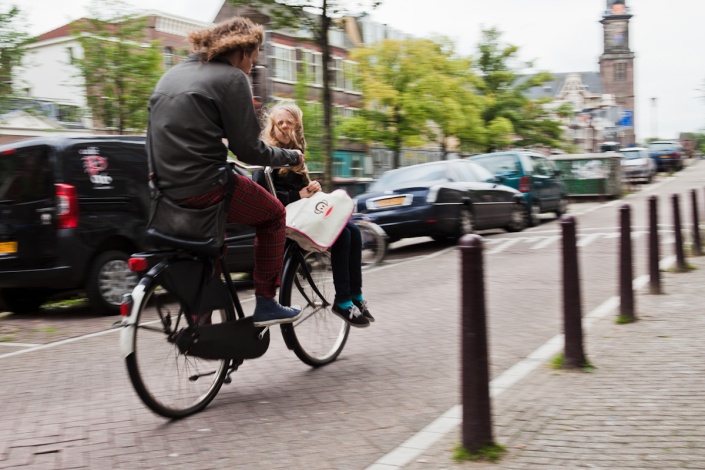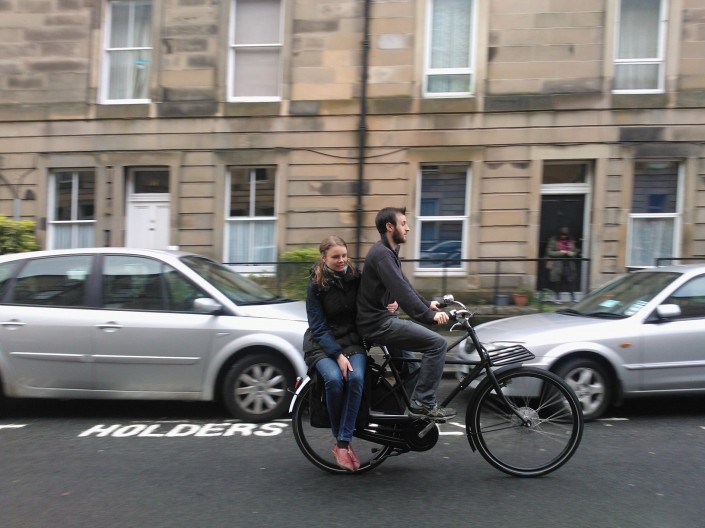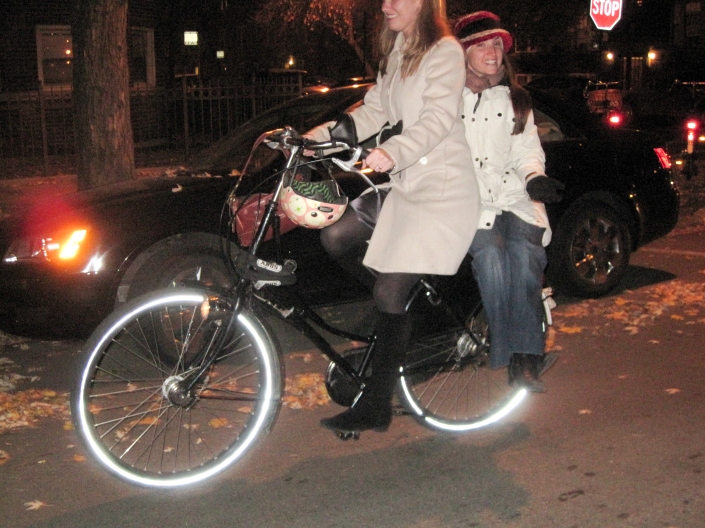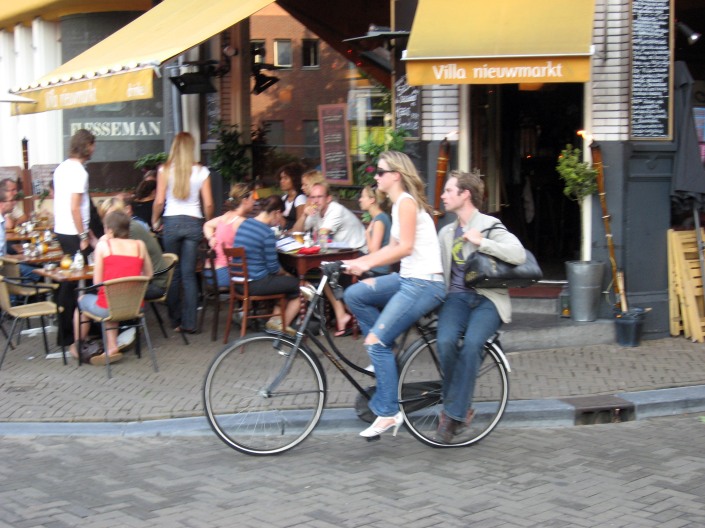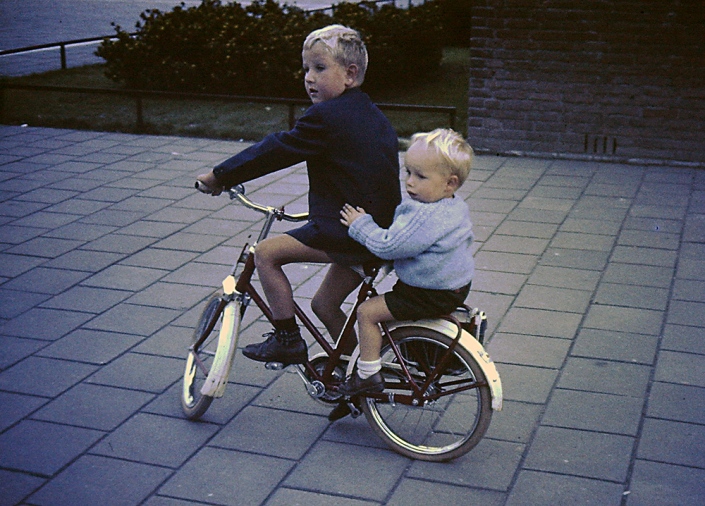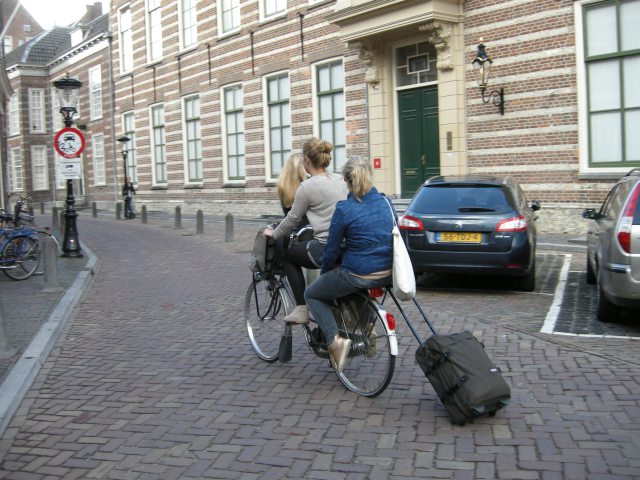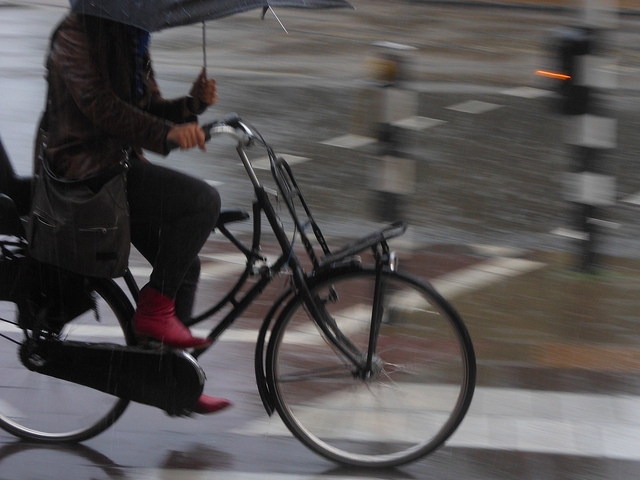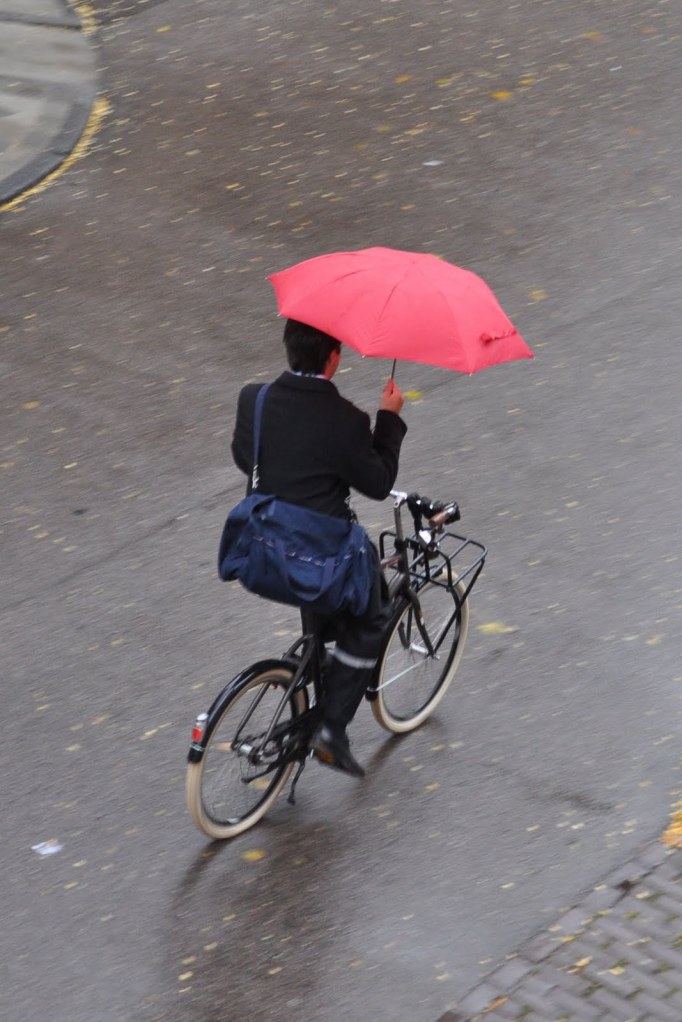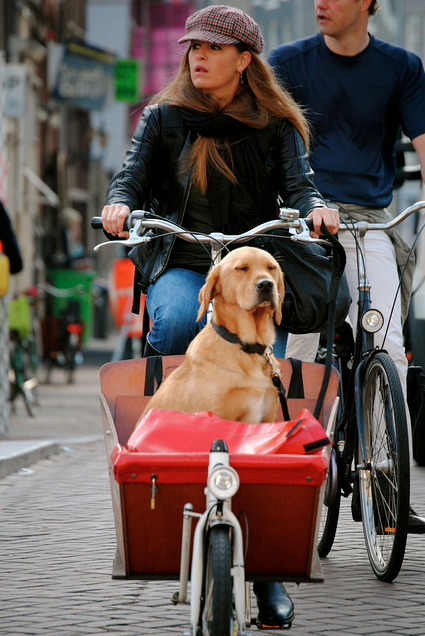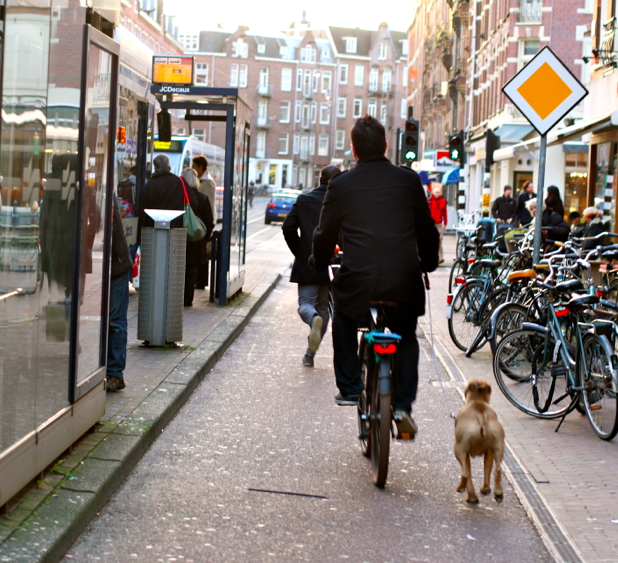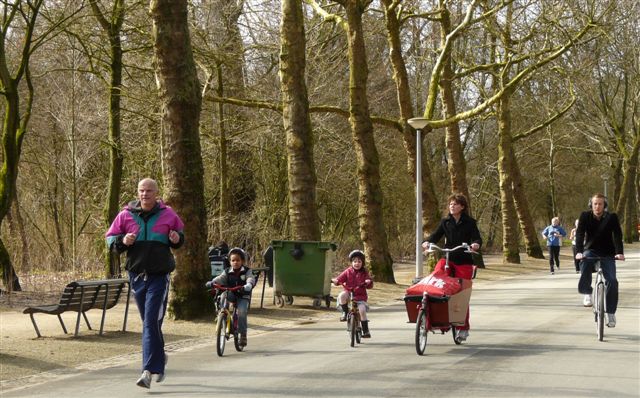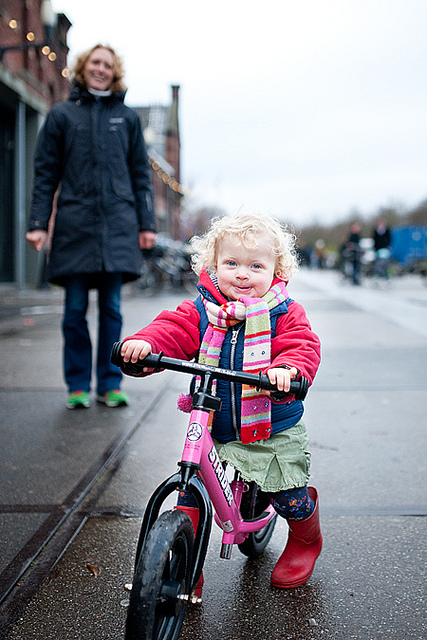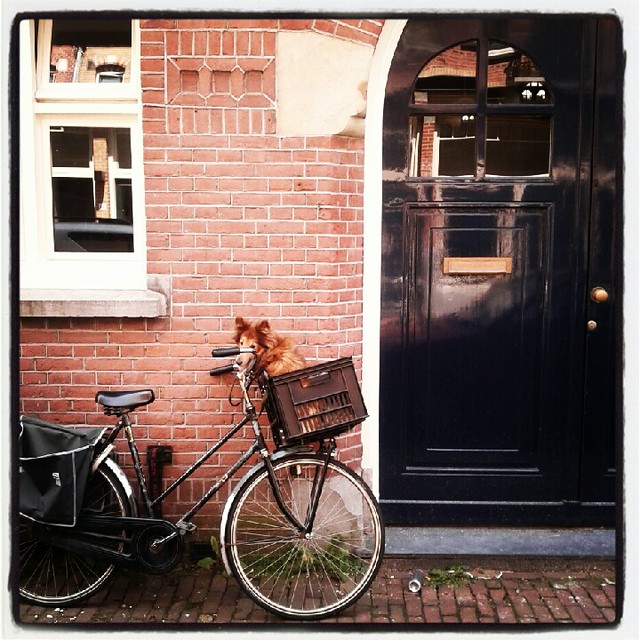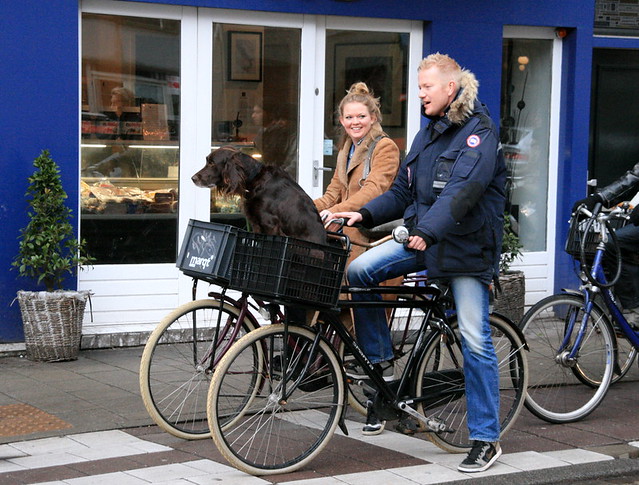Dutch Cycling
Dutch style transport in Edinburgh
me and Kristina, setting the trend in Edinburgh
It is great to see Dutch style transport in use in Edinburgh
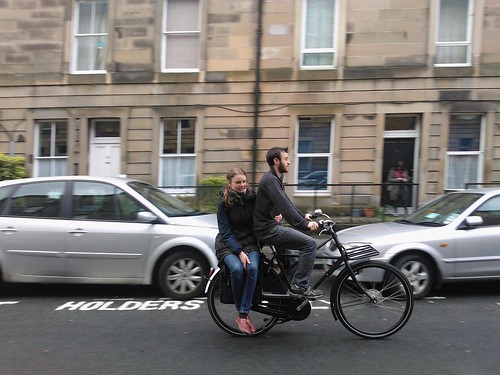
by harrywalton1.
Oh, to be a baby aboard a Dutch bike…
Video Posted on Updated on
This delightful music video really made my morning. #
To be a baby aboard a Dutch bike is truly to be king of the world.
The song is so good that we can even overlook the Sturmey Archer gear shifter on the handlebars…
Enjoy!
Why should non-cyclists support measures to boost cycling?
Video Posted on Updated on
This article (Kaya Burgess – The Times) describes the multifarious benefits of investment in cycling for all sorts of different groups in the UK. In what follows below, I intend to summaries and illustrate just a few of these benefits.
Motorists, for instance, would benefit from fewer traffic jams and less conflict with cyclists. Even Top Gear presenter and general motor-mouth Jeremy Clarkson has praised cycling as a way of getting around. He last year described Copenhagen’s cycling culture as “fan-bleeding-tastic” and said: “Now I know that sounds like the ninth circle of hell, but that’s because you live in Britain, where cars and bikes share the road space. This cannot and does not work. It’s like putting a dog and a cat in a cage and expecting them to get along. They won’t, and as a result London is currently hosting an undeclared war. I am constantly irritated by cyclists and I’m sure they’re constantly irritated by me.”
People who commute by train and by bus will also benefit if more people took up cycling, as the intense pressure on the public transport system would be eased.

As child obesity soars in the UK, parents and children will benefit from better infrastructure as cycling to school becomes an option again. The more people who cycle, the safer the streets become, and thus more people will be encouraged to take up cycling . With more than 2/3 of car journeys in the UK being less than 5 miles, most of the driving that people do is completely unnecessary anyway. The school run needn’t be the stress that it has become.
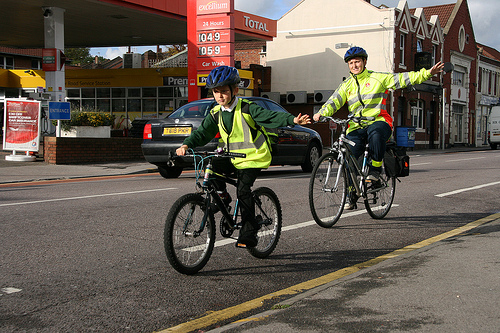
Ordinary adults will benefit from the regular exercise as well. Official advice recommends taking 150 minutes – or 2½ hours – of physical activity per week, but we do not always have the time – or inclination – to get down the gym or go for a jog after a long day or long week of work. Building cycling into a person’s daily routine is a brilliant way of nomalising the activity and incorporating exercise into their lifestyle.

Taxpayers will also benefit from investment in cycling. The NHS spends around £5 billion each year on tackling preventable diseases exacerbated by inactivity, including type 2 diabetes, heart disease and strokes. Around £16bn is currently being spent on the Crossrail project in London and a further £3bn on upgrades to the A9 road in Scotland. Health experts told the Get Britain Cycling inquiry that investing in cycle provision is by far the most cost-effective form of transport spend, recouping £4 in healthcare savings for every £1 invested.
Investing in cycling is also good for businesses and employers. Not only does a manager get a healthier and more alert workforce, but research in New York has shown that the introduction of cycle lanes led to a 49 per cent increase in retail sales. In terms of parking, bikes take up a lot less space than cars, so it follows that bikes can carry more potential customers than cars can.
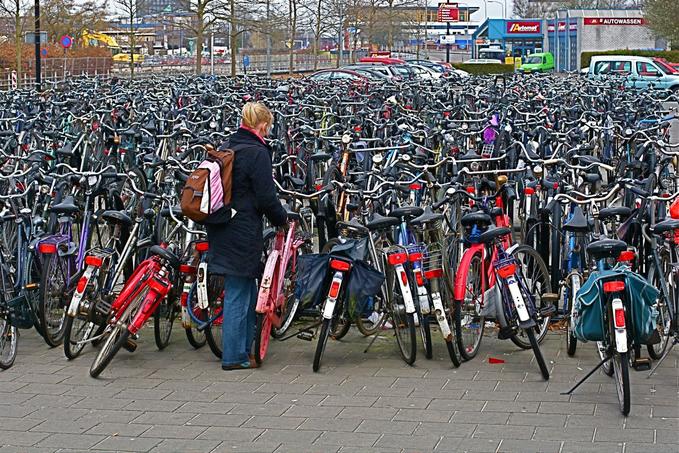
As a final point, the article notes that cyclists would also benefit from improved cycle infrastructure. It might seem like an obvious point, but around 2 per of traffic on Britain’s roads is made up by people on bikes, and as this figure grows the infrastructure will need to grow with it. For instance, of all vehicles crossing bridges over the River Thames in London at rush hour, more than half are bicycles – in spite of this fact the cycle lanes (which are shared and often blocked by buses) are at best only a third of a lane in width. It really is time the Government took cycling seriously.

I really liked this article, but it did miss out some other key groups who would benefit from a more Dutch-style cycling infrastructure, as illustrated in the following video:
Britain’s new cycling minister calls for more ‘everyday’ riders
Link Posted on Updated on
Britain’s new cycling minister calls for more ‘everyday’ riders
Cycling is such a part of the lifestyle in The Netherlands that most Dutch people don’t even think of themselves as ‘cyclists’.
Indeed, cycling is a perfectly normal activity, and so it is about time that we started treating it as such. This article from the Guardian’s bike blog describes how Britain’s cycling minister wants to see more ‘everyday’ riders on the road – the kind who have baskets on their bikes and just pootle around in normal clothes (i.e. not the usual lycra brigade).
It’s a nice idea, certainly, but I would like to highlight the key issue raised around of the middle of the piece:
“Campaigners […] point out that making cycling an everyday activity for people of all inclinations and ages generally requires years of investment in segregated cycle lanes, bike-safe junctions and other infrastructure.”
Without the right infrastructure to protect them, ‘everyday’ riders would be like lambs for the slaughter in cities like London. The minister for cycling clearly has his work cut out for him if his vision is to be realised.
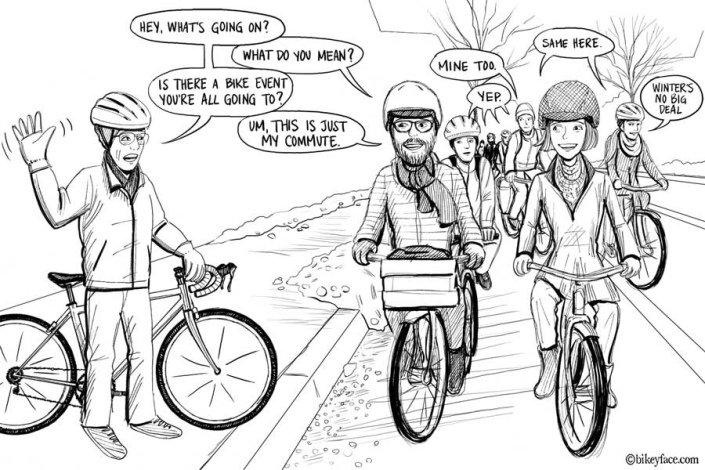
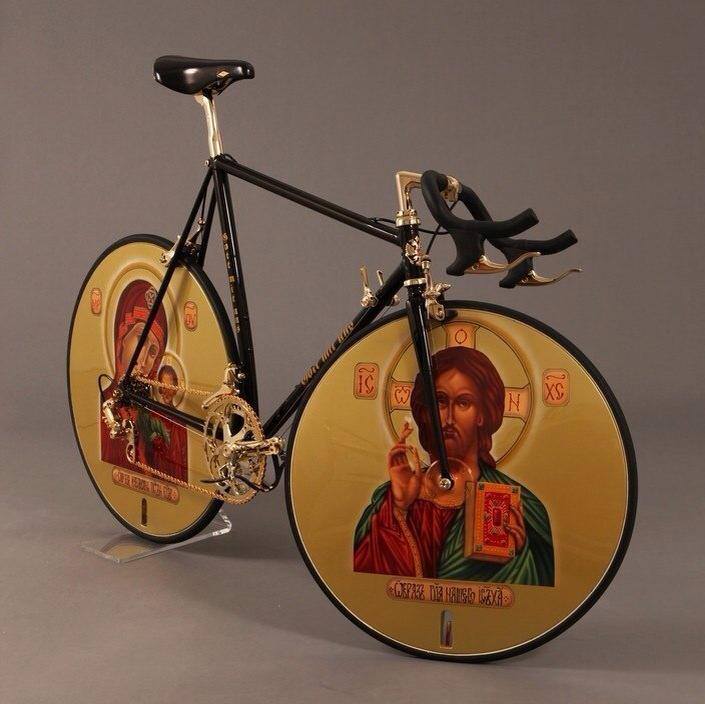
Cycling is not (intrinsically) dangerous
2013 saw many articles written under titles referring to the ‘dangers of cycling’. A few random examples can be found here, here, here, and here. This one even talks about the ‘terrors’ faced by cyclists on the road.
Indeed, cycling can be a dangerous activity, but this is not because cycling itself is dangerous…
For instance, it isn’t dangerous to cycle without a helmet
It isn’t dangerous to cycle without hi-viz
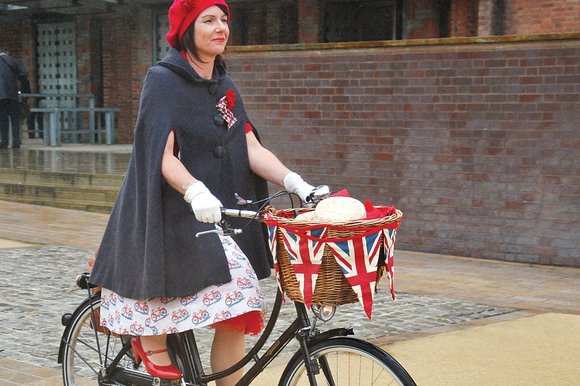
It isn’t dangerous to cycle with a passenger…
…no matter what age you are!
Even a couple of passengers (and a suitcase) is no big deal
Cycling with kids isn’t dangerous either
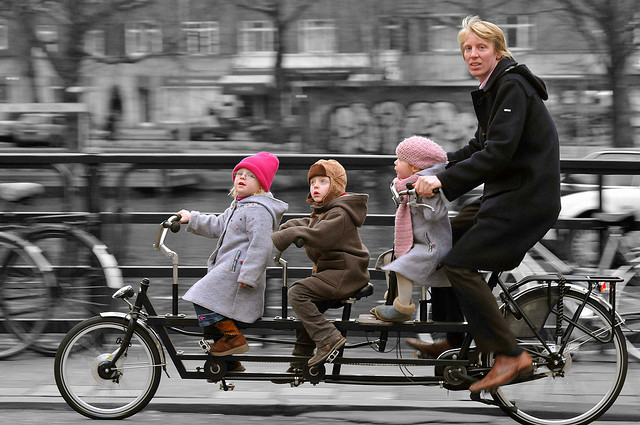
and it isn’t dangerous to cycle with an umbrella
It certainly isn’t dangerous to cycle next to your friends
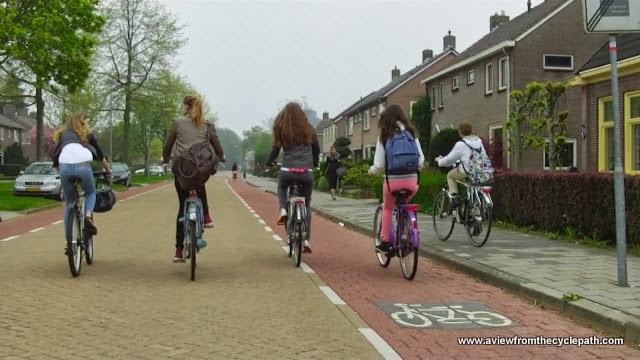
Even four-legged friends are safe to ride with.
Whether you’re a little bit older…

…or a little younger
…cycling itself is not a dangerous activity.
What these photographs illustrate is how the physical environment affects the relative danger of riding a bike. Many of the pictures also show how good infrastructure is the key factor in determining whether or not cycling is actually safe.
As we move into 2014, I am hopeful that governing bodies in the UK (and elsewhere, for that matter) pick up on the merits of cycling and do what is needed to protect people who ride bikes. At present (and from my perspective), city dwellers face an unappealing trilemma when deciding upon transportation; they can either:
1. Contribute to the city’s pollution and congestion by paying through the nose for a car (+driving licence/insurance/MOT/VED/petrol/parking etc.).
2. Pay to take crowded/crappy (and notoriously unreliable) public transport.
3. Ride a bike but risk their lives by sharing the road with heavy/powerful/fast moving motor vehicles.
If a person is able to ride a bike (i.e. if their health permits it), then it should be in everybody’s interest to support them. Biker riders take up less space on the roads, and so there is less congestion for everyone else; they are not pumping out pollution into the air that we all have to breath; they are exercising their bodies and so easing pressure on an NHS that is currently strained by an obesity epidemic; they aren’t damaging the roads to nearly the same degree that other vehicles do (thus saving tax-payers money); they don’t run people over (and if they do, injuries are usually minor); and last but not least, motor-vehicle dominated cities are noisy and unpleasant places, and so bikes offer a quiet and civilised remedy to this.
I think that cycling is brilliant, not just for the bike rider but for the world. I intend to keep up the pace this year with my campaigning, and I hope to keep you updated with any developments/innovations that might be of interest.
All the best
Space for cycle lanes – it can be found!
Whenever I tell people about my dream of having some decent cycling infrastructure in the UK, I am frequently met with the same point about there not being enough space on British roads. The general feeling is that roads are already too narrow, and that there simply isn’t any room to accommodate the type of segregated cycle lanes that work so well on the continent.
In opposition to this, I would like to present you with a group of photos taken from Google Streetview. In the left column you have shots of roads/junctions in the UK, and in the right column you have almost identical shots of places in The Netherlands. The point of the side-by-side comparison is to show how space is used differently, and how the Dutch so sensibly choose to separate pedestrians and cyclists from cars and HGVs. The streets are so similar that they could almost be before and after photos…
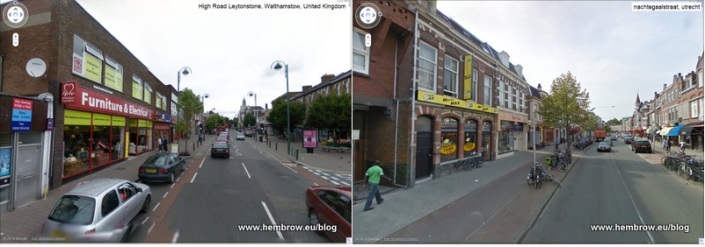
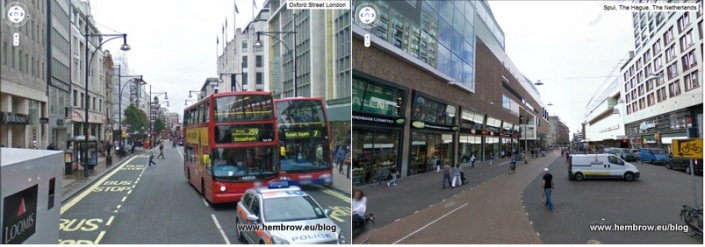
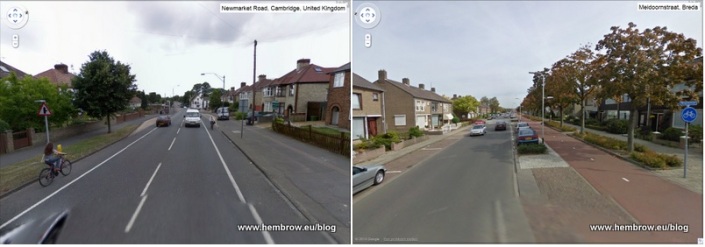
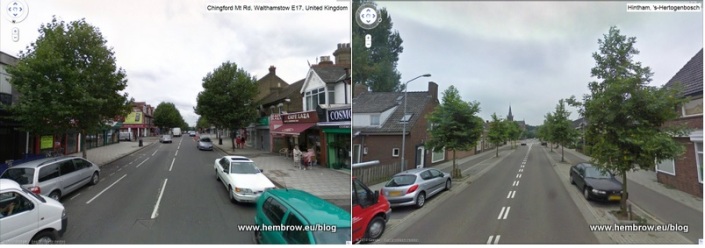
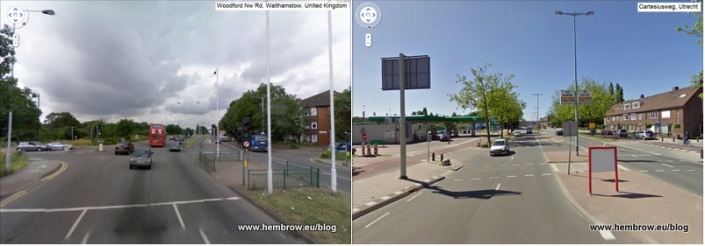
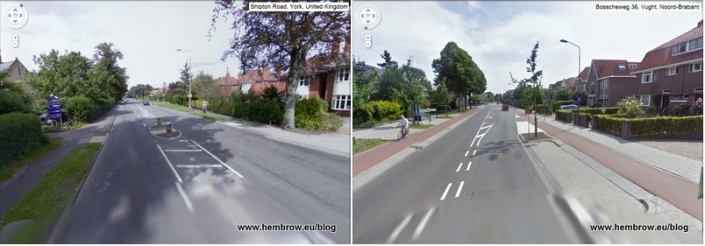
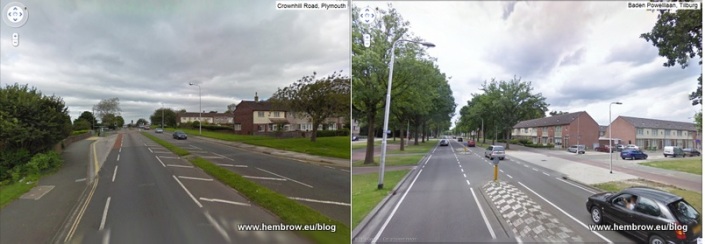
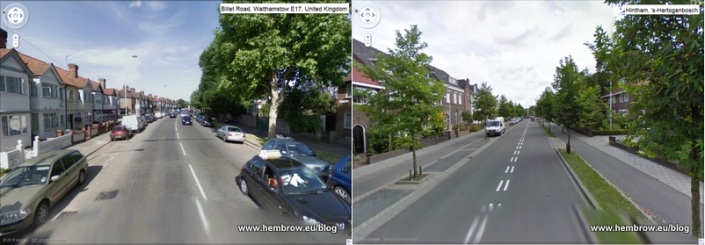
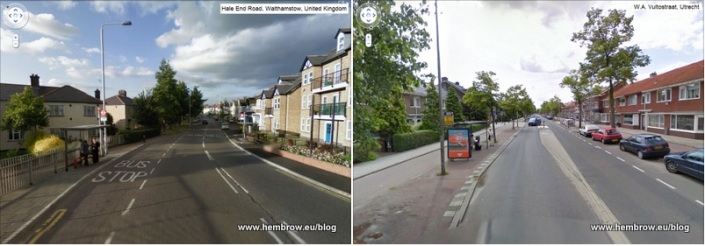

In each case, the cycling provision in the UK is rubbish or non-existent, while that provided on a similar street in The Netherlands offers a far superior cycling experience. Of course, if cycle lanes were better then more people would cycle, and if more people were riding bikes then there would be fewer cars on the road and so less congestion and less pollution. Everyone benefits, right?
The following video explains how the Dutch got their cycle paths, and how their cities made the transition from being car-centric to being more bicycle friendly.
What the Dutch have achieved is truly remarkable, and this is why I always hold them up as the best example for the UK to follow. They are the only country in the world able to boast the fact that more than a quarter of all their journeys are made by bike, and it would be my dream come true if we could achieve this feat in the UK.
Related articles
- Making cycle lanes safe (cyclingnelly.wordpress.com)
- Crosspost: Cyclists and pedestrians as ‘hazards’ for motorists. #wordlturnedupsidedown #takecaregtrmcr (manchesterclimatemonthly.net)
- No, it’s not the narrowest cycle path in Britain! (cyclingnelly.wordpress.com)
- Only 10 fines for illegal cycle lane parking (belfasttelegraph.co.uk)
Dogs + Bicycles = Happiness
Dogs and bicycles – what two simple things could bring a person more happiness?
Hi Amsterdam Cycle Chic team,
I never had a driving license and I have never missed it because my bike brings me everywhere! Cycling is freedom.What is nicer than discovering the city by bike? I cycle a Bub by Batavus now but years ago I had a real old omafiets, and… a very sweet Jack Russell puppy. Maybe a nice picture for your blog?
Best regards,
Louise

We love it to receive an email like this. People sharing their bicycle stories with us. In that way we get to know our readers a bit. So thanks for sharing Louise!
After seeing Louise’s picture I went through our own photos and selected a few dogs in baskets (or crates) for you, something you see a lot in the streets of Amsterdam. And you see, big dogs, small dogs, they all love to go for a ride!
Dutchman isn’t impressed by London’s cycling infrastructure
Video Posted on Updated on
A brief analysis of cycling conditions in London from David Hembrow.
As a Dutchman, Hembrow highlights the shortcomings of British infrastructure that we have to live with. He makes the point that not only are the roads inadequate for cyclists, but that they aren’t really serving motorists much better either.
More than anything else, the thing that really struck me about this video was the shear volume of noise coming from the road. Motor vehicles make the urban environment a really unpleasant place to be.
Another video that focuses specifically on the shortcomings of London’s CS2 can be found here
Related articles
- London’s ‘cycling superhighways’ are ideal … for kamikazes | Charles Montgomery (theguardian.com)
- Cycle deaths leave London bewildered (bbc.co.uk)
- Upgrade London’s CS2 to Continental Standards – call to arms (dutchbikeguy.wordpress.com)
John Snow calls for improvements in cycling infrastructure
Video Posted on Updated on
http://www.bbc.co.uk/news/uk-politics-25046751
Veteran journalist John Snow is also an avid cyclist.
He has commuted by bike both to and from work every day for the last 40-odd years, and he raises some valid points about the dangers of riding a bike and the inadequacy of cycle safety provisions.
He talks about the probability of ‘big rewards’ for the first politician to re-draw the urban map and prioritise cyclists and pedestrians. In terms of combating obesity, reducing pollution, and making our cities more pleasant places to live, I think I can see why such a measure would be well received.
He states that, as humans, we respond to our surroundings. On the issue of cyclists who flout the law, the point he makes is that good behaviour will come when there are good provisions to protect and facilitate cycling. At the moment, it is a dog-eat-dog world out there on the roads; as the underdogs, cyclists are therefore put in a position of vulnerability, and have to make the most of their situation. Snow doesn’t condone bad behaviour on the roads, but he can at least appreciate why it happens.
Also of interest: http://www.bbc.co.uk/news/uk-25013438 and http://www.bbc.co.uk/news/uk-25014296
Related articles
- VIDEO: Snow’s verdict on dangers of cycling (bbc.co.uk)
- Cycling policy ‘getting better’ (bbc.co.uk)
8 radical ways to protect cyclists
Link Posted on Updated on
8 radical ways to protect cyclists
The BBC have posted an article proposing 8 different ways of protecting people on bikes.
Interestingly, instead of simply copying the exemplary Dutch solution, they suggest wacky and impractical things like ‘elevated cycle routes’ and ‘body armour’ for cyclists.
How about strict liability laws and a better network of segregated cycle paths? Come on guys, they’ve shown us how it works on the Continent, it’s about time we stopped farting about with pie-in-the-sky ideas and got our act together.
